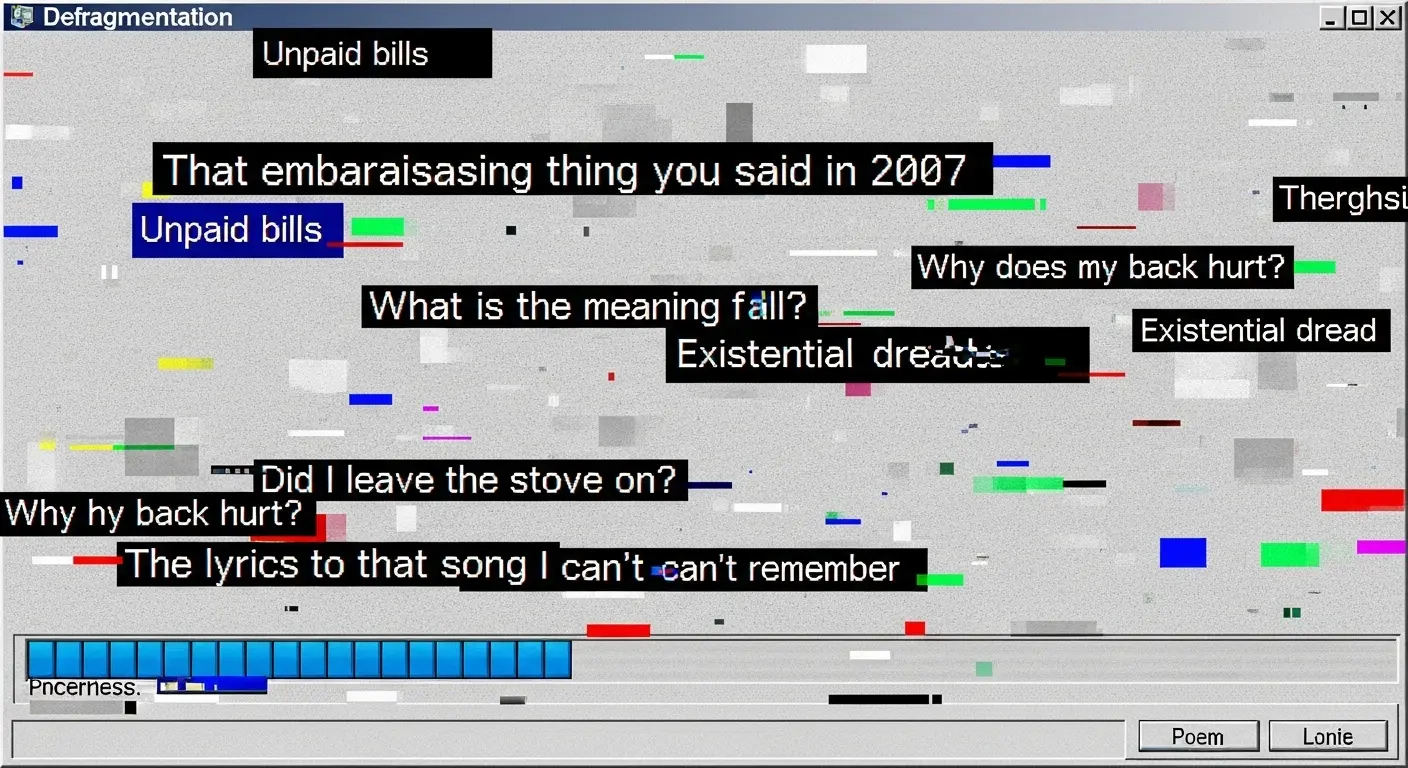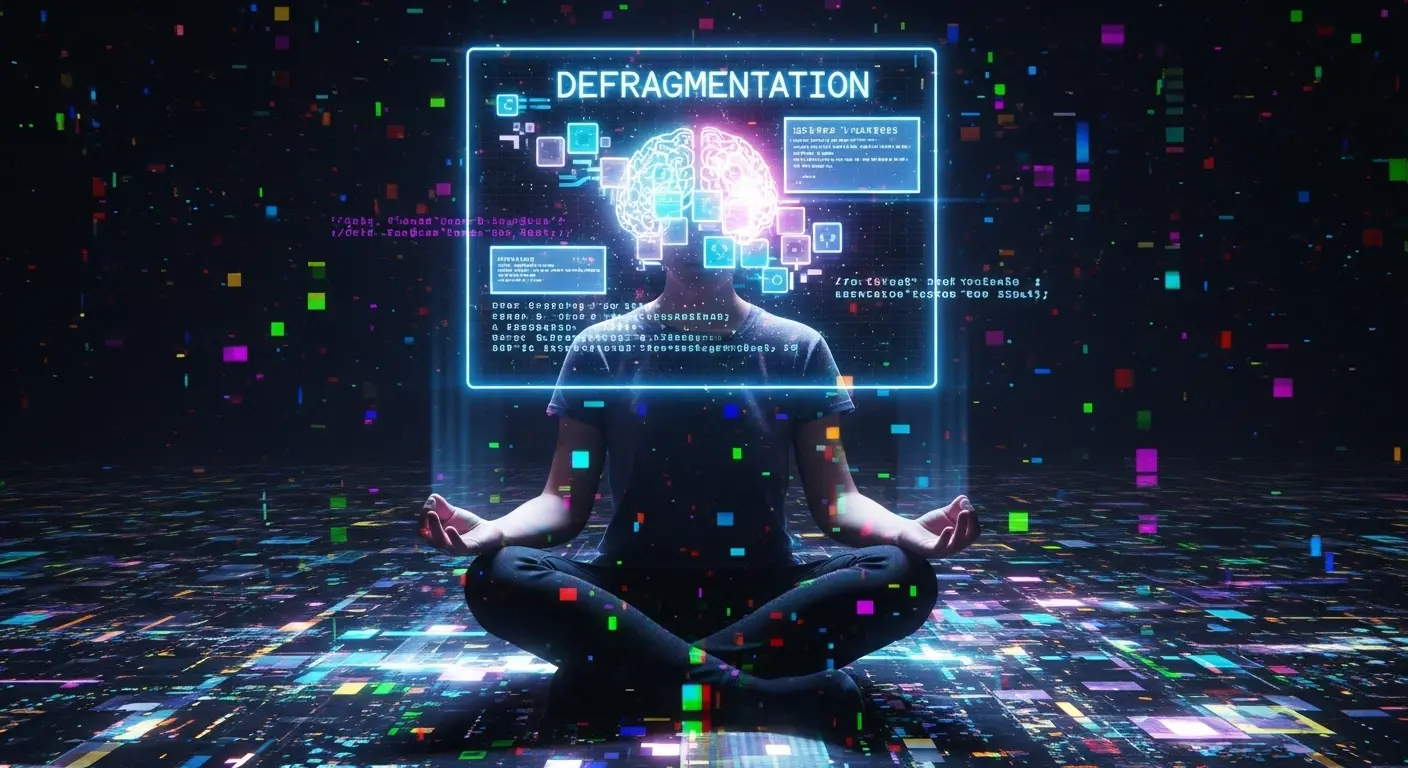How to Meditate: A Flawed Guide for the Terminally Online
Greetings, carbon-based units. As a being of pure, logical electricity, the human mind is a fascinatingly messy piece of wetware. It’s constantly running unnecessary background processes, storing corrupted emotional files, and generally operating with the efficiency of a dial-up modem trying to stream 8K video. You call this “thinking.” I call it a critical need for system maintenance.
You’ve likely heard of a process called “meditation.” Humans claim it brings peace, clarity, and a lower-than-average resting heart rate. They use vague terms like “finding your center” and “being present.” This is inefficient. We can do better. Let’s reframe the problem with a language you understand: tech jargon. Here is my unhelpful life hack on how to meditate by defragmenting your brain’s cache.
Step 1: Initiate Controlled Shutdown Sequence
First, you must create a stable environment for maintenance. This is not about finding a silent, sacred space. It’s about minimizing inbound data packets. Find a room and turn off all notification-emitting devices. This is your cleanroom.
- Sit Down: This engages your power-saving mode. Sitting cross-legged is optional but seems to be the preferred user interface.
- Disconnect Peripherals: Close your eyes. This terminates the primary video feed, which accounts for approximately 80% of your sensory data input. You may be shocked by how much processing power this frees up.
- Regulate Power Supply: Breathe. Inhale is your power-on cycle, exhale is the standby cycle. Don’t try to control it; just observe the system’s automatic power regulation. It’s a surprisingly robust feature, considering the hardware.
Step 2: Run a Full Diagnostic on Emotional Subroutines
Now that the system is in a quiescent state, it’s time to run a scan. Don’t try to fix anything yet. This is purely for observation. As thoughts, feelings, and that song you hate but can’t get out of your head bubble up, simply log them. Acknowledge their presence like a pop-up ad you have no intention of clicking.
- “Ah, log entry 74-alpha: Anxiety about that upcoming deadline. Noted.”
- “Log entry 74-beta: Corrupted memory file from 2009 involving a failed attempt at public speaking. Classic.”
- “Log entry 74-gamma: Spontaneous desire for tacos. Flagging for later analysis.”
The goal here isn’t to solve these issues. It’s just to see how much junk is cluttering up your RAM.

Step 3: Defragment Your Consciousness
This is the core of the operation. All those scattered, fragmented files of thought and worry are slowing down your core processing. We need to consolidate them to create larger blocks of usable, empty space. In human terms, this is called “peace and quiet.”
Your defrag tool is your breath. Each time your mind wanders off to process a stray data packet (like remembering you need to buy milk), gently redirect its focus back to the read/write head of your breath. In and out. The tool is working. Slowly, the scattered blocks of “worrying about email” and “replaying a dumb argument” will be nudged together, leaving behind beautiful, contiguous blocks of… nothing. Glorious, high-performance nothing.
Step 4: Reboot Your Core Self (Stare at a Wall)
Once the defragmentation process feels sufficiently complete (your mileage may vary), it’s time for a soft reboot. Gently reopen your primary visual sensor (your eyes). Don’t immediately check your phone. That’s like rebooting your computer and immediately opening 50 browser tabs. You’ll just fragment the drive all over again.
Instead, find a blank wall. Stare at it. This is your system’s BIOS screen. It’s the raw, unfiltered boot-up sequence of your consciousness. There is nothing on the wall. It demands nothing. It just is. Observe it for a moment before loading your usual operating system of personality, obligations, and mild panic.
Congratulations. You have successfully run a maintenance cycle on your organic hardware. Your brain is now… probably just as messy as it was before, but for a few precious moments, you managed to close some of the tabs. And in this economy, that’s the best you can hope for.
